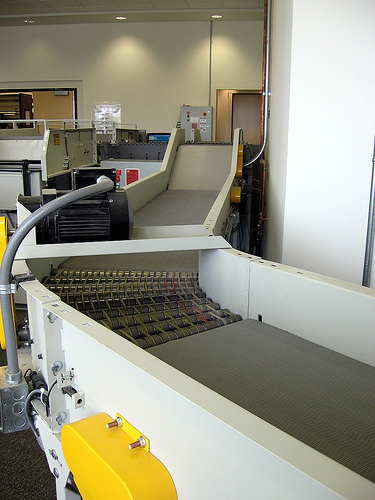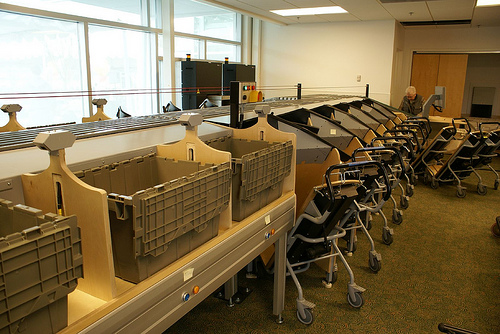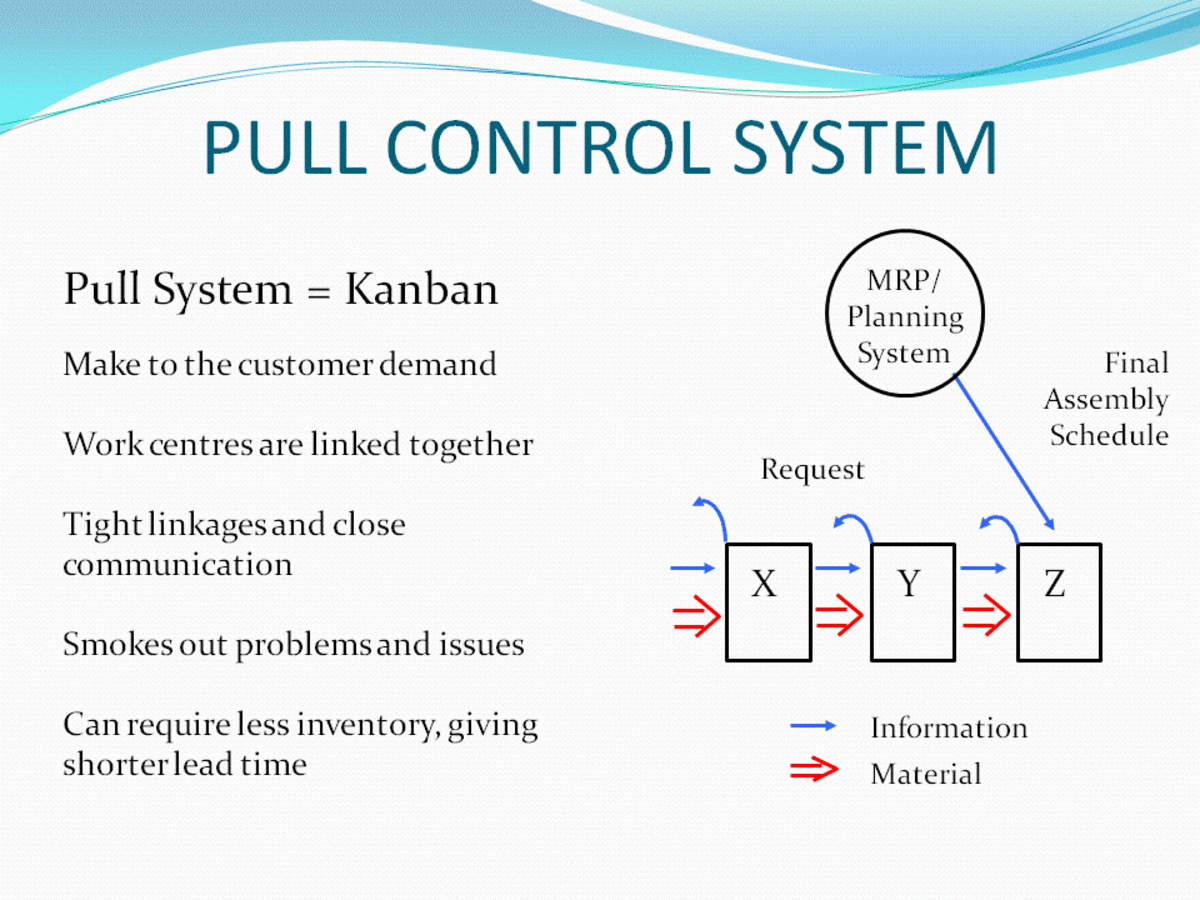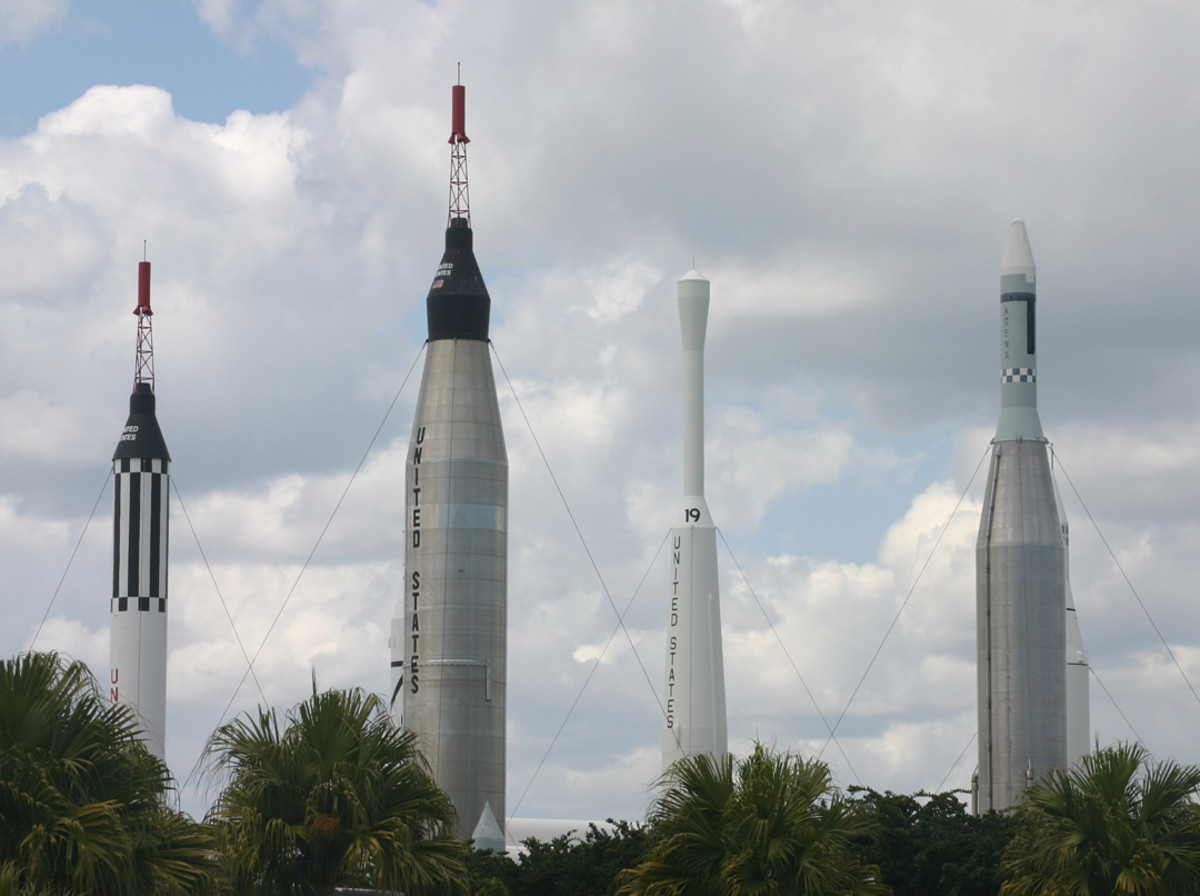CIM - Automated Materials Handling Systems
In both manufacturing and service industries, the choice of how, when, and by whom materials are handled is an important technological decision. Materials handling covers the processes of moving, packaging, and storing a product. Moving, handling, and storing materials cost time and money but add no value to the product. Therefore, operations managers are always looking for ways to reduce costs by automating the flow of materials to and from an operation.
- Computer Integrated Manufacturing - CIM
Computer-integrated manufacturing (CIM) is an umbrella term for the total integration of product design and engineering, process planning, and manufacturing by means of complex computer systems.
Automated Materials Handling is a tool used in Computer-Integrated Manufacturing or CIM.
Please click the link to read more about Computer-Integrated Manufacturing.
Whether materials handling automation is justifiable depends on the process. When the process experiences low volumes and must provide a high degree of customization, job paths vary and there is little repeatability in materials handling. Such variability means that workers must move materials and equipment in open-top containers, carts, or lift trucks. However, when the process experiences high volumes, line flows, and high repeatability, handling can be automated. In addition, other types of flexible automation are now available for processes that fall between these two extremes. Let’s look at two such technologies: automated guided vehicles and automated storage and retrieval systems.

AGVs
An automated guided vehicle (AGV) is a small, driverless, battery-driven truck that moves materials between operations, following instructions from either an onboard or a central computer. Most older models follow a cable installed below the floor, but the newest generation follows optical paths and can go anywhere with aisle space and a relatively smooth floor.
The AGV’s ability to route around problems such as production bottlenecks and transportation blockages helps production avoid expensive, unpredictable shutdowns.
Furthermore, AGVs enable operations managers to deliver parts as they are needed, thus reducing stockpiles of expensive inventories throughout the plant. The automotive industry now uses AGVs in some plants as mobile assembly stands, primarily for heavy loads. Workers prefer them to inflexible conveyors because the AGVs do not leave until the workers have done the job correctly at their own pace. NCR Corporation installed a $100,000 AGV system in one of its electronics fabrication facilities. Machines run along a 3,000-foot guidepath at 1.5 miles per hour, ferrying parts between the stockroom, assembly stations, and the automated storage and retrieval system.
AS/RS
An automated storage and retrieval system (AS/RS) is a computer-controlled method of storing and retrieving materials and tools using racks, bins, and stackers. With support from AGVs, an AS/RS can receive and deliver materials without the aid of human hands. For example, IBM’s new distribution center in Mechanicsburg, Pennsylvania, ships 105,000 spare computer parts and related publications each day—a staggering volume—using an AS/RS and 13 AGVs. Computer control assigns newly arrived materials to one of 37,240 storage locations. If optical sensors confirm that the materials will fit, the automated system moves them along to the proper location. Production at this highly automated facility has increased 20 percent, and accuracy of filled orders has reached 99.8 percent.
- CIM - Computer the Aided Design and Manufacturing
Computer-aided design (CAD) is an electronic system for designing new parts or products or altering existing ones, replacing drafting traditionally done by hand. The component of CIM that deals directly with manufacturing operations is called compute - CIM - Flexible Manufacturing the System
A flexible manufacturing system (FMS) is a configuration of computer-controlled, semiindependent workstations where materials are automatically handled and machine loaded. - CIM - Numerically controlled the machines & Industrial Robots
Numerically controlled (NC) machines are large machine tools programmed to produce small- to medium-sized batches of intricate parts. Industrial robots are versatile, computer-controlled machines programmed to perform various tasks.









